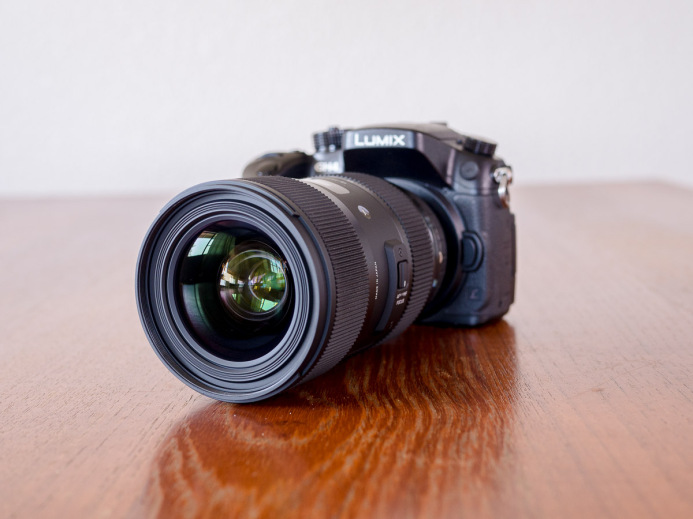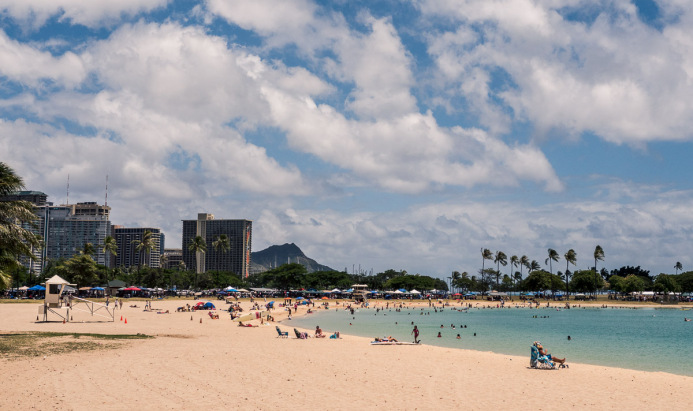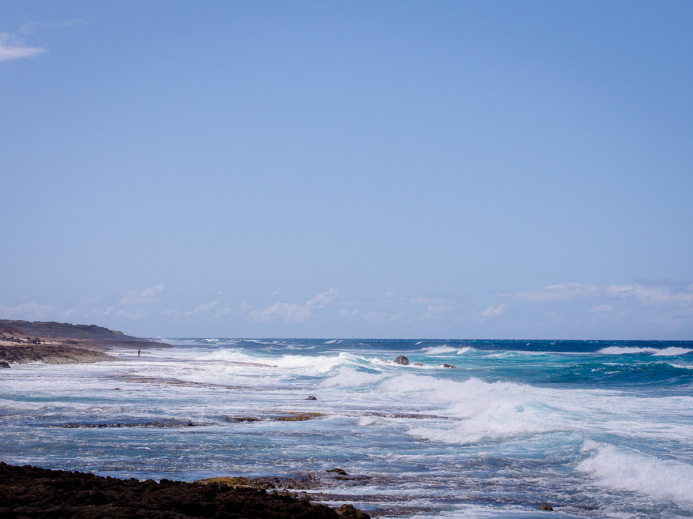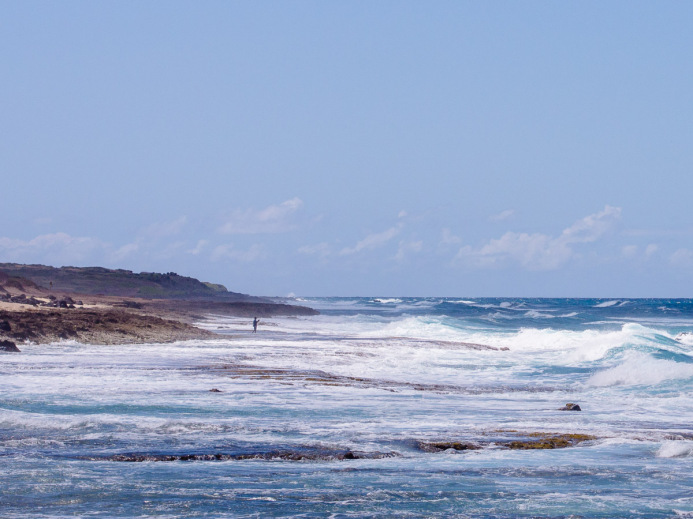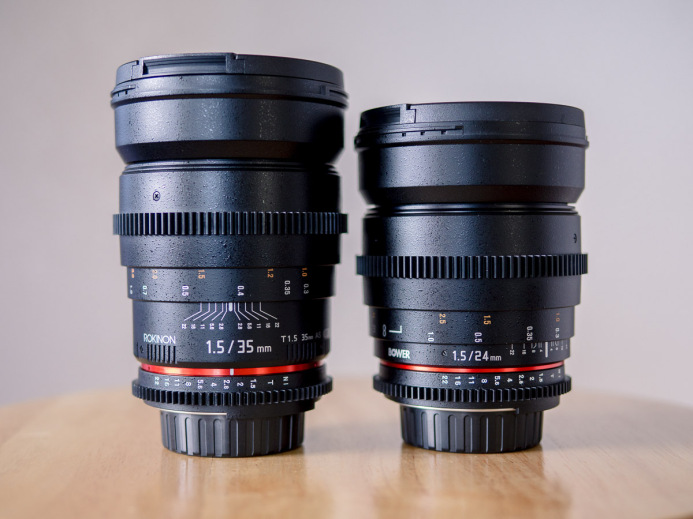4 Reasons Zoom Lenses are Awesome for the Panasonic GH4
Zoom lenses may be bigger, heavier, and slower than prime lenses, but zooms also have several benefits that leave primes in the dust.
I prefer prime lenses over zooms in most situations– even those where a zoom lens is considered to be the obvious choice (e.g. documentary work). Primes are more compact and have wider apertures, making them ideal for low-light shooting and DOF control.
Primes are also more limiting– which is a good thing because it forces you to be creative to get the shot and keeps you on your toes. Remember, a lazy shooter is a bad shooter.
That said, there are situations where a zoom lens just can’t be beat. Here are 4 reasons why you should be shooting with zoom lenses:
1. A Zoom is Multiple Lenses in One
Zoom lenses are chameleons, able to change and adapt to the situation.
Even a sub-2x zoom lens like Sigma’s 18-35mm f/1.8 is incredibly versatile. Despite having such a small focal range, this lens gives you access to several common focal lengths– 18mm, 25mm, 28mm, 30mm, and 35mm.
Moreover, a zoom lens is infinitely versatile, so while you can use common focal lengths, you can also use anything else in between.
Bottom line: A single zoom lens replaces multiple prime lenses (and everything in between).
2. Zooms are Downtime Proof
With primes, a lens change is required whenever you need to change framing or composition (and cannot move the camera itself). If you have a lot of setups, you could be looking at a lot of downtime on set.
Or you could just use a zoom lens.
Zoom lenses eliminate downtime caused by lens changes. Instead, you simply select a new focal length with a twist of the zoom ring.
Bottom line: Say hello to zoom lenses and goodbye to downtime.
3. Zooms Keep You Safe in Dangerous Conditions
Environments with a lot of airborne particulate can wreak havoc on your camera’s sensor and other internal components.
In other words, don’t even think about changing lenses at the beach.
A zoom lens provides you with the flexibility you need to get a wide variety of shots without exposing your camera’s sensor to the elements.
Bottom line: Zoom lenses keep the dust (and salt, and sand, etc.) at bay without limiting your framing options.
4. Zooms Give You More for Your Money
Zooms are more complex than primes, so it makes sense that a zoom lens would cost more than a prime.
However, as a zoom lens can effectively cover the range of multiple prime lenses, the picture changes quite a bit when you compare two primes to a single zoom lens.
Example: 2 Primes vs 1 Zoom
Let’s say we want some fast glass to cover 24mm and 35mm focal lengths, so we choose a couple mid-range Rokinon cine lenses:
- Rokinon Cine DS 24mm T1.5: $750
- Rokinon Cine DS 35mm T1.5: $490
- Total: $1240
For comparison, we’ll use one of the best zoom lenses available that covers this focal range: Sigma’s 18-35mm f/1.8 ($799).
Sigma’s zoom lens covers the focal lengths of both Rokinon lenses in addition to saving over $440 in total costs. Add a third prime to the set and the savings really add up.
What’s more, the Sigma zoom not only saves you money, but also delivers better image quality in this scenario. The Rokinon primes may have wider maximum apertures (f/1.4 vs f/1.8), but they’re soft wide open and need to be stopped down to f/2 before they begin to match the Sigma’s quality at its maximum aperture of f/1.8.
Bottom line: The right zoom lens can cover a wider focal range, save you money, and even deliver better image quality than a more expensive set of prime lenses.
Bonus: How to Choose Zoom Lenses
Sigma’s 18-35mm f/1.8 is an exceptional zoom lens, but not all zooms are created equal. Here are a couple useful tips for when shopping for a zoom lens:
1. Get A Wide Aperture
Primes lead the pack in wide apertures, making them the better option for shooting in low-light environments and providing greater control over DOF and subject isolation.
Aside from the Sigma’s prime-beater 18-35mm f/1.8, the widest aperture of most modern zoom lenses is f/2.8. It’s not ideal, but f/2.8 is usable in most situations.
Here are some native zoom lenses for the GH4 with a maximum aperture of f/2.8:
Further Reading: Lens Throwdown: Panasonic 12-35mm f/2.8 vs Olympus 12-40mm f/2.8
Your list of lens options grows with the aid of lens adapters like the Metabones Speed Booster. Here are just a few examples:
Further Reading: 7 Days with the Metabones EF Speed Booster
2. Demand Constant Aperture
Most zoom lenses start at one aperture when zoomed out and end up at a slower aperture when zoomed in.
Not good.
A constant aperture lens maintains the same aperture across the entire focal range, providing you with the same low-light performance regardless of the focal length you choose. Stick with constant aperture zooms whenever possible.
Note: All of the aforementioned f/2.8 zoom lenses are also constant aperture lenses. You’re welcome.
Luke, Use the Zoom (Just Don’t Abuse It)
Zoom lenses are versatile, convenient, and can even save you money.
In short, zoom lenses are great, as long as you don’t abuse them.
A zoom lens provides so much versatility that it’s easy to waste time playing with different focal lengths when you should be getting the shot. Instead, be purposeful with your focal length selection so that you maintain consistency between shots.
Also, avoid zooming mid-shot. Unless you have a clear purpose for a mid-shot zoom , you’ll be in for a world of pain during editing. Also, as most photographic zoom lenses are not parfocal, you’ll likely just end up with a blurry shot if you insist on zooming mid-shot.
As long as you’re disciplined, zoom lenses can be great to use with the GH4. Sign up below for future guides on the zoom lenses and other resources for the Panasonic GH4.
Related
- 5 Reasons you should be using prime lenses with the Panasonic GH4 — Convinced that zooms are the best? This will make you think twice.
Lens Options for the Panasonic GH4
Introduction
- Micro Four-Thirds: Introduction & Overview
- Using Native Lenses
- Using Adapted Lenses
- How to Choose Your First Lens
Canon EF Lenses
- Using Canon EF Lenses
- Review: 7 Days with Metabones’ Canon EF Speed Booster
- Speed Booster Showdown: Canon EF vs Nikon
- PSA: Canon EF-S is not the Same as APS-C
Prime Lenses
- 5 Reasons You Should Be Using Prime Lenses
- 9 Awesome Prime Lenses (Wide Angle to Telephoto)
- Essential Prime Lenses for Your Documentary
Zoom Lenses
- 4 Reasons Zoom Lenses are Awesome for the Panasonic GH4
- Lens Throwdown: Panasonic 12-35mm f/2.8 vs Olympus 12-40mm f/2.8
Buying Guides
More Panasonic GH4 Guides
- Why You Should Be Excited About the Panasonic GH4
- Lenses for the Panasonic GH4 — Awesome glass for an awesome camera.
- Memory Cards for the Panasonic GH4 — Get the right memory cards for HD and 4K.
- Configuring the Panasonic GH4 for Video Production — Set the GH4 up for filmmaking.
- Rigging the Panasonic GH4 — Cages, Rigs, Components, Gear, and Reviews.
- Stabilizing the Panasonic GH4 — Tripods, Monopods, Sliders, 3-Axis Gimbals, etc.
- Maximizing the Panasonic GH4’s Audio Performance — Sound matters.
- Powering the Panasonic GH4 — Keep the GH4 shooting all day.
- Should you buy the YAGH for the Panasonic GH4?
- 6 Reasons Why DSLR Shooters Love the Panasonic GH4
